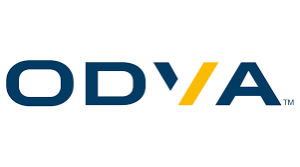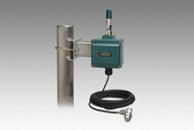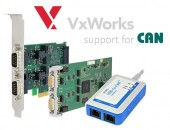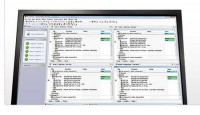 The Avnu Alliance, CC-Link Partner Association, ODVA, OPC Foundation, and PROFIBUS & PROFINET International jointly announce that they are collaborating to develop a single conformance test plan for the IEEE/IEC 60802 Time Sensitive Networking (TSN) profile for Industrial Automation. The test plan will be used as a base test by all the participating organizations and made available to the broader Industrial Automation ecosystem. This collaboration contributes towards end user confidence that 60802 conformant devices from different manufacturers which support different automation protocols will coexist reliably at the TSN level on shared networks, including with devices using TSN for applications other than automation.
The Avnu Alliance, CC-Link Partner Association, ODVA, OPC Foundation, and PROFIBUS & PROFINET International jointly announce that they are collaborating to develop a single conformance test plan for the IEEE/IEC 60802 Time Sensitive Networking (TSN) profile for Industrial Automation. The test plan will be used as a base test by all the participating organizations and made available to the broader Industrial Automation ecosystem. This collaboration contributes towards end user confidence that 60802 conformant devices from different manufacturers which support different automation protocols will coexist reliably at the TSN level on shared networks, including with devices using TSN for applications other than automation.
The focus of the collaboration is to work together towards a jointly agreed and owned test plan for the industrial automation market. This formal collaboration provides value by creating a structure in which all these organizations can work together and exchange ideas towards the end goal of interoperability and coexistence on open, standard networks for all protocols, without needing to establish a separate, formal organization. For convenience, the collaboration activities will be referred to as “TIACC” (TSN Industrial Automation Conformance Collaboration).
The TIACC marks a commitment by these organizations to develop an interoperable ecosystem of devices from different manufacturers to comply with the IEC/IEEE Standards Association 60802 profile and enable end-users to confidently deploy these devices on open, standard networks. The goal is to have the final version of the single, shared test plan available soon after the IEC/IEEE 60802 profile is published.
“Avnu’s purpose and mission is to transform standard networks to enable support for many time sensitive applications and protocols in an open, interoperable manner. This collaboration among organizations will be critically important to facilitating coexistence of multiple workloads and protocols according to IEEE 60802 on a network, while leveraging foundational network interoperability that is used across industries,” said Greg Schlechter, Avnu Alliance President. “We are committed to working with the industries to enable an interoperable ecosystem of devices that allow end users to confidently deploy on open, standard, and converged networks.”
“The creation of the Connected Industries of the future requires different systems and devices to communicate in order to deliver the necessary process transparency required. This is a core principle for the CLPA and is at the root of why the organization was founded. This is why we are delighted to be part of the TIACC and look forward to supporting the creation of a unified, common test plan for TSN-compatible products. By doing so, we can help further boost the adoption of futureproof technologies for smart manufacturing,” said Manabu Hamaguchi, Global Director at CLPA.
“EtherNet/IP users will be able to take advantage of the benefits afforded by 60802 TSN of enhanced network performance, higher utilization, and guaranteed network access for multiple time-critical applications with different priorities. ODVA’s participation in TIACC will ensure that the full potential of 60802 TSN coexistence is realized by end users to help make Industry 4.0 and IIoT a reality,” said Dr. Al Beydoun, President and Executive Director at ODVA.

 Yokogawa Electric Corporation announces that it has developed an ISA100 Wireless™*-based field wireless vibration sensor with the ability to quickly update data and a long battery life, and will release it in markets other than Japan on December 7. By providing real-time updates on vibration levels in plant facilities, this sensor helps users quickly detect equipment anomalies and enables predictive maintenance.
Yokogawa Electric Corporation announces that it has developed an ISA100 Wireless™*-based field wireless vibration sensor with the ability to quickly update data and a long battery life, and will release it in markets other than Japan on December 7. By providing real-time updates on vibration levels in plant facilities, this sensor helps users quickly detect equipment anomalies and enables predictive maintenance. The ECI driver with VxWorks support allows easy development of CAN-based real-time applications on Intel® Core™ architectures and processors, such as Intel® Core™ 2, Intel® Celeron® (Core), Intel® Celeron® M (Merom), Intel® Pentium® Dual-Core (Allendale /Merom) and Intel® Xeon® (Core).
The ECI driver with VxWorks support allows easy development of CAN-based real-time applications on Intel® Core™ architectures and processors, such as Intel® Core™ 2, Intel® Celeron® (Core), Intel® Celeron® M (Merom), Intel® Pentium® Dual-Core (Allendale /Merom) and Intel® Xeon® (Core). National Instruments, the provider of platform-based systems that enable engineers and scientists to solve the world’s greatest engineering challenges, announced today a technology preview of its new 802.11ad, or WiGig, test solution at EDI CON USA 2016. Highlighting new capabilities in the emerging field of mmWave test, NI is demonstrating parametric testing of an 802.11ad radio using its mmWave instrument technology.
National Instruments, the provider of platform-based systems that enable engineers and scientists to solve the world’s greatest engineering challenges, announced today a technology preview of its new 802.11ad, or WiGig, test solution at EDI CON USA 2016. Highlighting new capabilities in the emerging field of mmWave test, NI is demonstrating parametric testing of an 802.11ad radio using its mmWave instrument technology. Industrial automation manufacturer and Internet of Things platform developer Opto 22 announces immediate availability of Node-RED nodes for its industrial programmable automation controllers (PACs), significantly decreasing IIoT application development time and complexity. These Node-RED nodes for PACs make it easier to prototype and develop applications for connecting physical assets to cloud applications. Node-RED nodes and a RESTful API for Opto 22 SNAP PAC R-series and S-series controllers are available free for download at http://developer.opto22.com.
Industrial automation manufacturer and Internet of Things platform developer Opto 22 announces immediate availability of Node-RED nodes for its industrial programmable automation controllers (PACs), significantly decreasing IIoT application development time and complexity. These Node-RED nodes for PACs make it easier to prototype and develop applications for connecting physical assets to cloud applications. Node-RED nodes and a RESTful API for Opto 22 SNAP PAC R-series and S-series controllers are available free for download at http://developer.opto22.com.